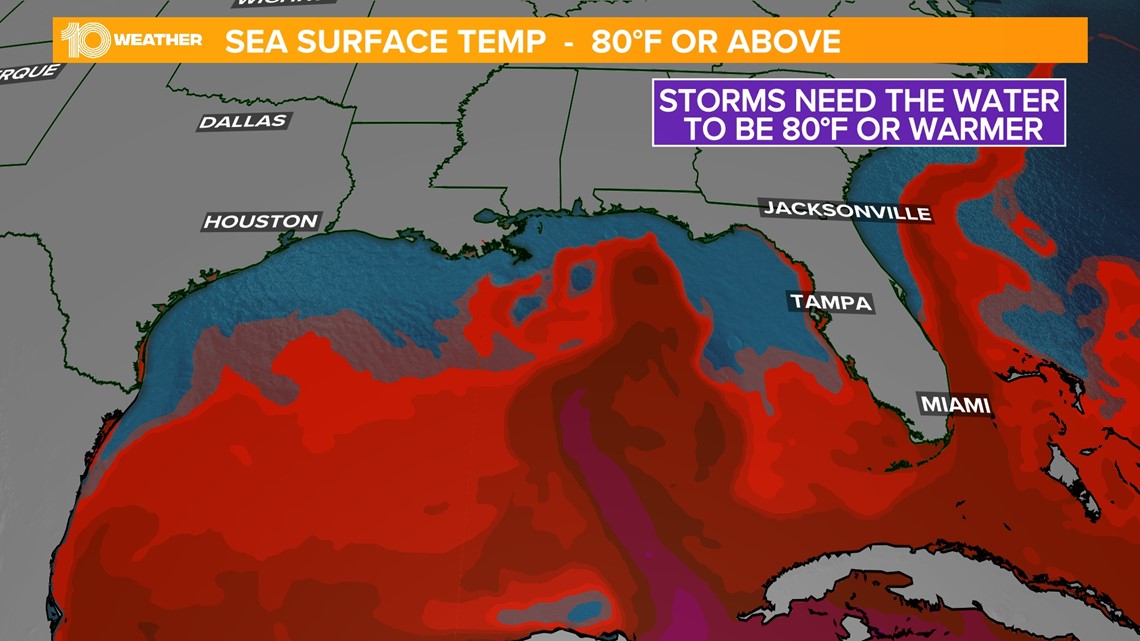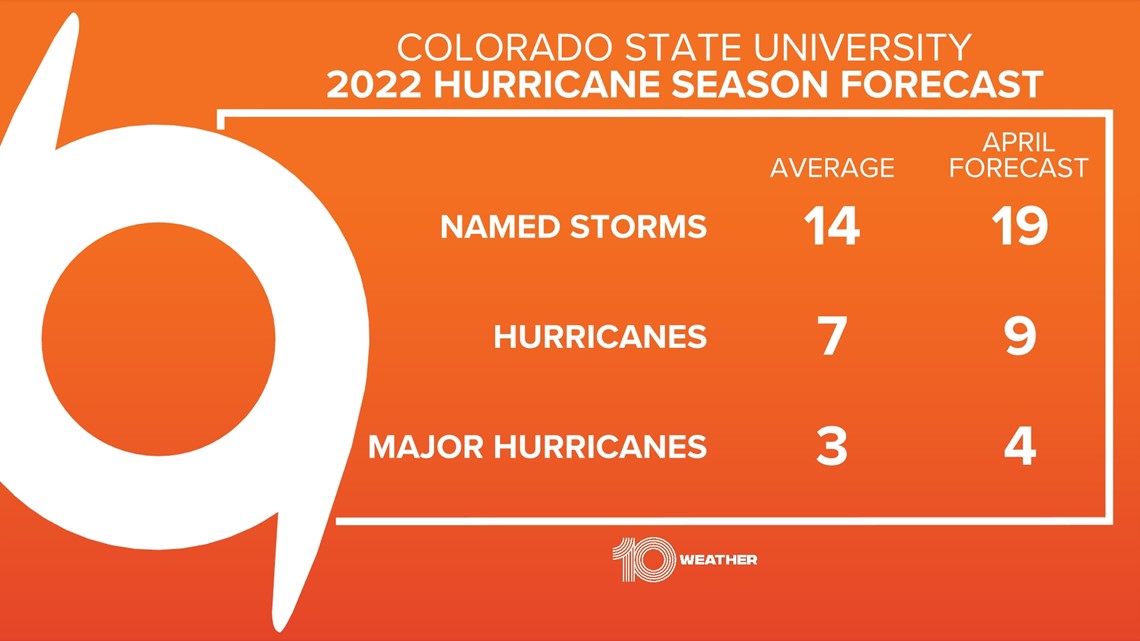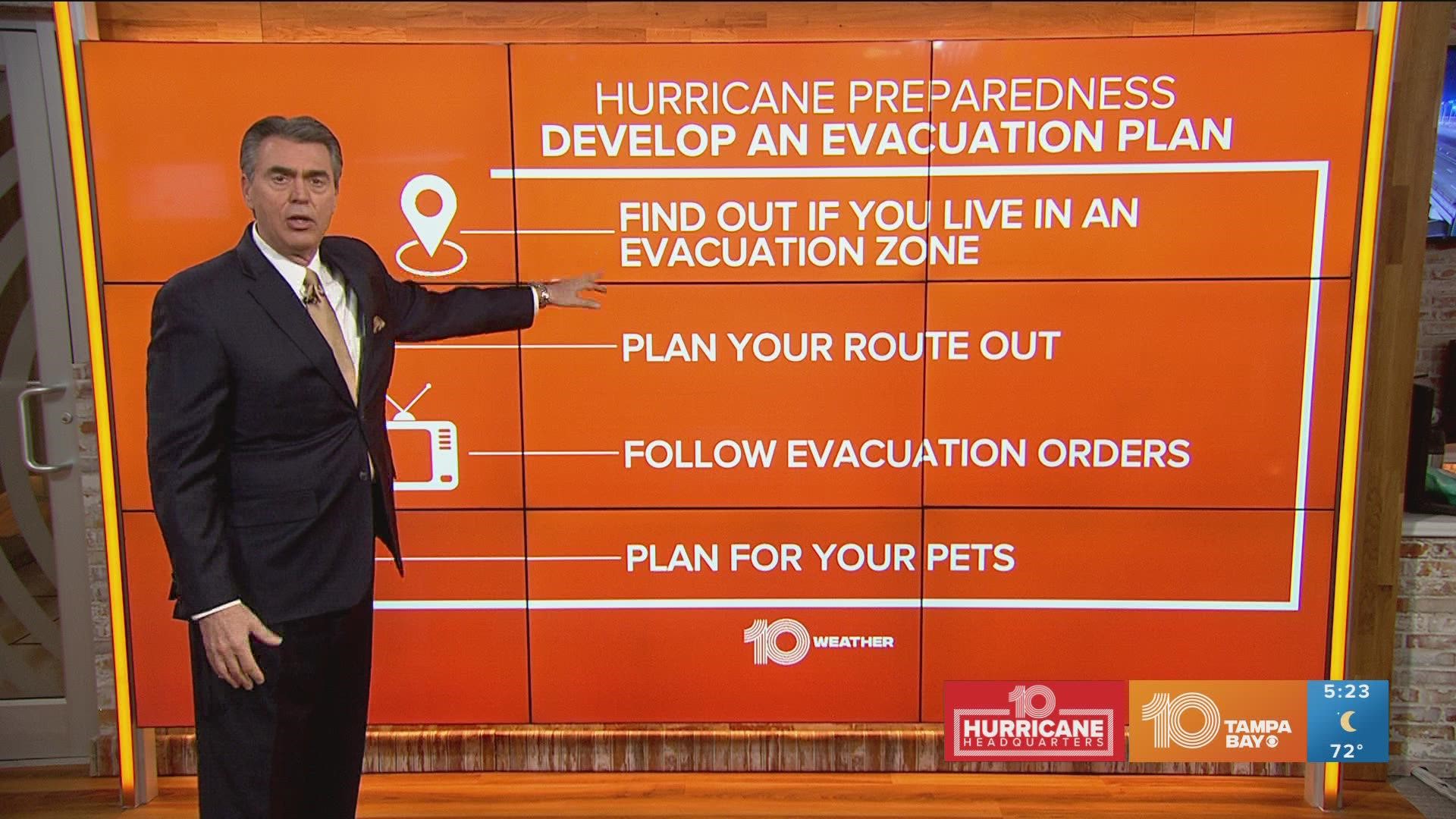TAMPA, Fla — Ahhh. There's nothing like an afternoon dip in the warm Gulf of Mexico on a sunny summer day.
The St. Petersburg buoy observed a peak temperature of 79.5 degrees Monday afternoon. While that is ideal swimming water to some, that temperature provides a reminder of what's to come this hurricane season, which we're only a few weeks away from starting.
Hurricanes are essentially large engines fueled by the warm summer waters of the Atlantic Basin. Ocean temperatures are just one of the few factors that influence hurricane frequency, sustainability and intensity, but they play a significant role in tropical storm development.


Tropical development requires an energy source, and that source is heat from the ocean. As long as the central low-pressure core remains over those warm waters and the top of the storm is not shredded apart by upper-level winds, a storm has the potential to intensify (sometimes rapidly) and grow.
For hurricanes to form and sustain themselves, scientists generally agree that sea surface temperatures must be at least 80-degrees Fahrenheit.
During the month of May, the average temperature at the St. Petersburg tidal gauge is 80 degrees. By June, that number jumps up significantly to 84 degrees, and water temperature averages remain in the upper 80s throughout the rest of summer.


The warmest temperatures in the North Atlantic are usually observed in the month of September, the peak of the Atlantic hurricane season. However, water temperatures in the 90s have been recorded outside of peak hurricane season in the past.


So what does this mean for the 2022 hurricane season?
In an average year, the Atlantic hurricane basin produces 14 named storms, seven hurricanes and three major hurricanes (Category 3 or higher). Hurricane experts at Colorado State University are forecasting an above-average season with 19 named storms, nine hurricanes and four major hurricanes.


CSU researchers points toward above-average sea-surface temperatures in the Caribbean and La Niña or neutral conditions continuing into the summer/fall for the driving force behind the above-average forecast. If Gulf of Mexico temperatures run a fever during the summertime, those waters will help further fuel storms.
Enjoy those warm swims, but let each dip serve as a reminder to prepare for another potentially active storm season.

